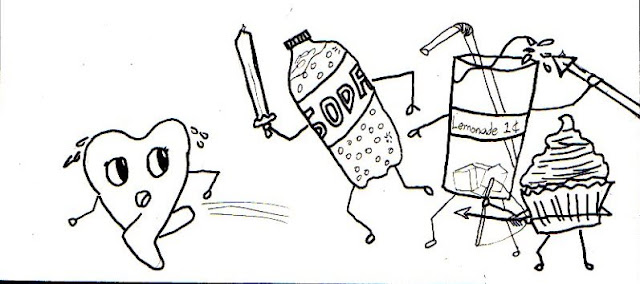 |
| By Aishwarya Jayadeep |
I always had problem flossing, as my teeth are all tight together. But now with the waxed flosses that are available, flossing is a breeze. I didn't know anything about flossing until I went for dentistry. So you can guess how popular flossing was fifteen years back, where I come from. I still remember the first time I tried flossing and how much I hated it; as it was not something I was used to, growing up. Still, I try to find excuses for not flossing. But it is different with Aishwarya. As she has always flossed regularly since childhood, flossing comes as second nature to her. So friends, if you are someone like me who didn't floss growing up, my advice is to start flossing as it is never too late and you will get used to this with time. And if you have a little one, make sure you imbibe this habit in him or her so that flossing becomes a breeze to him /her.
Flossing removes the bacteria that escape the toothbrush by hiding in the tiny spaces in between teeth. Brushing without flossing is like washing only 65% of your body. The other 35% remains dirty! The American Dental Association recommends that you floss at least once a day. Plaque (the complex bacterial ecosystem that forms on tooth surfaces between cleanings) is what causes tooth decay, inflamed gums (gingivitis), periodontal disease -- and, eventually, tooth loss. Flossing or using an interdental cleaner is the only effective way to remove plaque between teeth.
Effective flossing does take a while -- once a day for a “good three to five minutes”. But even 60 seconds of flossing is of enormous benefit.
If flossing causes gum pain or bleeding, odds are you have gingivitis or gum disease -- precisely the conditions for which flossing is beneficial.With daily brushing and flossing, gum pain and bleeding should stop within a week or two. If either persists, see a dentist.
Dental floss comes in many forms: waxed and unwaxed, flavored and unflavored, wide and regular. Wide floss, or dental tape, may be helpful for people with a lot of bridgework. Tapes are usually recommended when the spaces between teeth are wide.They all clean and remove plaque about the same. Waxed floss might be easier to slide between tight teeth or tight restorations. However, the unwaxed floss makes a squeaking sound to let you know your teeth are clean.
You may prefer a prethreaded flosser or floss holder,these disposable plastic Y-shaped devices (some equipped with a spool of floss) hold a span of floss between two prongs to allow one-handed use. which often looks like a little hacksaw. Flossers are handy for people with limited dexterity, for those who are just beginning to floss, or for caretakers who are flossing someone else's teeth.I recommend this for kids too.
How to floss?
Here’s how the American Dental Association describes the process:
Start with about 18 inches of floss. Wrap most of it around the middle finger of one hand, the rest around the other middle finger.
Grasp the floss tightly between your thumbs and forefingers, and use a gentle shoeshine motion to guide it between teeth.
When the floss reaches the gum line, form a C shape to follow the contours of the tooth.
Hold the floss firmly against the tooth, and move the floss gently up and down.
Repeat with the other tooth, and then repeat the entire process with the rest of your teeth (“unspooling” fresh sections of floss as you go along).
Don’t forget to floss the backs of your last molars. “By far, most gum disease and most decay occurs in the back teeth,”


